- News
- Reviews
- Bikes
- Accessories
- Accessories - misc
- Computer mounts
- Bags
- Bar ends
- Bike bags & cases
- Bottle cages
- Bottles
- Cameras
- Car racks
- Child seats
- Computers
- Glasses
- GPS units
- Helmets
- Lights - front
- Lights - rear
- Lights - sets
- Locks
- Mirrors
- Mudguards
- Racks
- Pumps & CO2 inflators
- Puncture kits
- Reflectives
- Smart watches
- Stands and racks
- Trailers
- Clothing
- Components
- Bar tape & grips
- Bottom brackets
- Brake & gear cables
- Brake & STI levers
- Brake pads & spares
- Brakes
- Cassettes & freewheels
- Chains
- Chainsets & chainrings
- Derailleurs - front
- Derailleurs - rear
- Forks
- Gear levers & shifters
- Groupsets
- Handlebars & extensions
- Headsets
- Hubs
- Inner tubes
- Pedals
- Quick releases & skewers
- Saddles
- Seatposts
- Stems
- Wheels
- Tyres
- Health, fitness and nutrition
- Tools and workshop
- Miscellaneous
- Buyers Guides
- Features
- Forum
- Recommends
- Podcast
feature
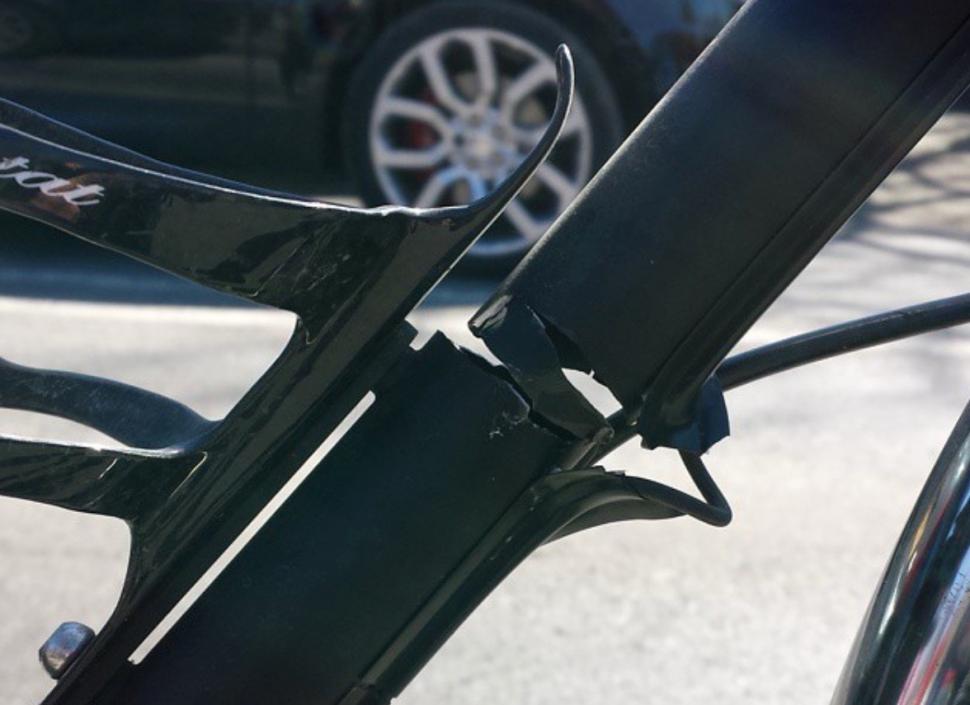 Cracked frame - 1
Cracked frame - 1Warranty: sometimes things break – why you should check out your bike's warranty, what's covered, what's not + tips for making a claim
Chances are that warranty isn't top of your list of considerations when buying a new bike because, well, it's not the most fun thing ever – but it could be crucial if an issue develops. Here's what is and what isn't likely to be covered by the warranty, how they vary between brands, and some tips for handling a claim.
What's covered?
Have you ever read the warranty covering any bike you've ever bought? A few hands have gone up, but most people are staring at their shoes! Brands always publish warranties on their websites and you'll probably have got a copy with your bike but, let's be honest, they never make exciting reading. Most of us only check out the warranty if an issue comes to light, but that could be a mistake.
Specialized's current warranty says, "We stand behind our frames — forever. This means we offer a lifetime warranty to the original owner against structural defects in material or workmanship on ALL models of Specialized-branded frames and forks."
We'll come back to warranty duration later. Warranties usually apply only to the original owner although with Specialized, if you're not the first owner you're eligible for a two-year warranty from the date of the initial purchase. Whether you're the first or a subsequent owner, you're going to need the original proof of purchase to begin any warranty claim.
You'll always find something in the warranty along the lines of Specialized's "structural defects in material or workmanship" phrase. In other words, the bike brand is only going to be accountable for problems that are its own fault, not surprisingly.
What's covered by a road bike warranty is usually pretty straightforward but things can sometimes be more complicated with mountain bikes.
With Cannondale, for example, most frames are warrantied "for the lifetime of the original owner" but "frames of Gravity, Freeride, Downhill, Dirt Jump and other ASTM Category Five Bicycles" (covering extreme jumping or downhill grades on rough trails at speeds in excess of 25 mph) have a three-year warranty. Then swing arms, chainstays, seatstays, and shock links of full suspension frames have a five-year warranty.
If you're buying a bike that falls into that sort of category, check the small print first to make sure you're getting what you expect.
Most road bikes have a fork from the same brand as the frame that's included in the warranty, although occasionally for a shorter period. Merida frames have a lifetime warranty, for instance, while it's limited to five years for rigid forks. However, if a mountain bike's suspension fork comes from a third-party brand it won't be covered by the same warranty (more on component warranties in a mo).
If the bike brand specs in-house components on its bike, you'll usually get some details about these in the warranty. Giant, for example, offers a lifetime warranty on most frames and all rigid forks, but the warranty is limited to a year for Giant-branded parts.
What isn't covered?
Do some more reading and you'll find details of what's not covered by the warranty. In Specialized's case this includes damage caused by "crash, neglect, improper repair, improper maintenance, or other abnormal, excessive, or improper use".
Crash damage – like this to the bike of paralympic cyclist Simon Richardson, who was knocked off during a training ride – obviously isn't a warranty issue
Some of those are pretty clear. If you're involved in a crash, the brand won't pick up the tab. Crack your road bike's frame jumping a set of doubles and that's improper use; you're not going to argue your way out of that one.
Other things are less black and white. 'Excessive use', for example, is open to interpretation.
You'll often find something in the warranty saying that the paint finish and decals are covered for about a year, but that doesn't include scratches.
Speaking of paint, Pinarello's warranty explicitly excludes "products that have been even partially repainted" so you might want to check your own bike's warranty before you book it in for an expensive custom finish.
Wear and tear isn't covered by the warranty – that's just life!
Many warranties give a long list of parts that are prone to gradual damage as a result of normal riding, and this isn't covered by the warranty: bearings, brake pads and the like.
Cracked frame
What about a crack in the frame?
"It’s difficult to say for certain, but there are a few identifiers to tell whether a crack is a genuine warranty claim caused by fatigue over time or another issue," says Giant's warranty manager Russell Davies.
"For example, carbon almost never cracks straight unless via impact, because the crack will take the path of least resistance. That is a key identifier. Also, the general condition of the bike is taken into account, as poorly maintained parts can lead to frame issues and this can cause a problem. Even if people think they were ‘just riding along’, their negligence on maintenance can actually be doing damage without them knowing.
"Over time our warranty team’s knowledge helps us understand where the ‘common’ fault areas are on different models and the most common places for cracks to occur – perhaps where the carbon layup is slightly thinner. That can help to diagnose a genuine manufacturing crack versus a crash which can be in unnatural areas where there is less load on the frame.
"The number one rule is to keep your bike clean and well tightened/oiled/greased. Replacing wear and tear parts frequently is not only good practice, it will definitely help a warranty claim if a problem should occur down the line."
Turbo trainers
Another thing to bear in mind is that a few brands explicitly state that you shouldn't use certain bikes on a turbo trainer.
Seven Cycles, for example, says, "All frames with carbon seatstays are optimised for normal road riding conditions and not designed for fixed stationary trainers. Use of a stationary trainer with any clamping mechanism will void the frame’s warranty."
Is it okay to use your bike on a turbo trainer?
Canyon used to say something similar but it now provides a list of models approved for use on turbo trainers, including the Aeroad, Ultimate, and Endurace road bikes.
How long?
Warranty duration can vary considerably. Brands such as Specialized and Trek offer a lifetime warranty on their frames, while five years is common too.
British bike brand Ribble offers a five-year warranty on its steel and titanium bikes and three years on carbon and aluminium. BMC gives you a warranty of three years which it will extend to five if you register your purchase online within 30 days. Other brands do something similar, so make sure you take the time to fill in your details or you could be kicking yourself later on.
"We offer a two-year warranty period from the date of delivery, and then an additional four year guarantee," says Canyon's sales and customer service manager Aaron Budd. "The explanation of these is clearly defined on our website."
"We actually see a minimal rate of warranty or guarantee cases, and this is due to our extensive product testing and quality control carried out at our HQ in Germany. For example, every single carbon fork, cockpit, seatpost or handlebar we produce is CT scanned to check the quality at our facility in Koblenz, and are have a unique QR code should we ever need to review this in future. Our frames are scanned in the same way, but in batches, ensuring we offer the best product without extending production times."
Does the length of the warranty indicate a brand's confidence in its own products? Bianchi's Andrew Griffin says that's not necessarily the case.
"It's misleading to look solely at a lifetime warranty as a mark of quality," says Andrew. "Most manufacturers have to work to the same quality standards and a number of them, ourselves included, work to a standard that is twice that required.
"The main consideration is length of ownership. A particular brand may have an average length of ownership of three years, whereas Bianchi's is seven years. It's fairly safe to offer a lifetime warranty when your average customer has sold the bike after three years."
Most issues covered by the warranty come to light much sooner than that.
"It is very rare for a manufacturing defect to appear after the initial year or so," says Giant's Russell Davies. "However, it does occur and we will always honour anything that is a genuine fault.
"We have had limited lifetime warranty on frames available since 2012. Prior to that we had 10 years, and prior to that five years. If a consumer finds an issue, Giant will of course look at this under the terms and conditions of the warranty agreement and we have on occasion replaced a frame up to 10 years old. The current policy has not been running for longer than 10 years, but if in the event we have an issue beyond that time we will of course look at the frame."
Third party components
As mentioned above, bike warranties don't cover components from third parties like Shimano or SRAM, for instance.
The groupset manufacturer's warranty doesn't cover the gradual wearing of you chain, chainrings and sprockets but you might turn to it if, say, your shifter just stops working six months down the line.
We won't go into component warranty in much depth here but Shimano, for example, warrants that its products are "free from defects in materials and workmanship under normal conditions and reasonable use" for two years in most cases, and gives a three-year warranty on top-level Dura-Ace road and XTR mountain bike products. All the usual type of caveats apply: the product mustn't have been modified, used for rental purposes, damaged in an accident, and so on.
"Despite the number of branded components on bikes, it's not always down to that bike brand to support the component warranty," says Bianchi's Andrew Griffin. "If there's no UK support from the particular brand then we'll happily cover it, but most component brands we use have UK distribution and they are best placed to handle the warranty."
What if you've bought your bike direct from the brand?
"Like any local bike shop, we also facilitate warranty or service on all the components supplied as stock specification on our bikes," says Canyon's Aaron Budd. "The warranty terms vary between manufacturers, but our technical service team are here to handle all enquiries promptly and confirm the options available.
"We handle this in the UK, and once your request is registered, we provide the relevant return instructions and references to get the component(s) back to the UK Service Centre so we can process this on your behalf."
Starting a warranty claim
If you think you have a warranty issue, you should first contact the dealer from whom you bought the bike, rather than the brand.
"Any warranty claim has to start at the dealer and the consumer should have their proof of purchase with them," says Bianchi's Andrew Griffin.
"The issue is discussed and, if deemed a warranty by the dealer, the bike is photographed and the photos forwarded to us. We make an initial appraisal, but if we're not certain if it is a warranty we ask for the bike to be returned to us and we'll do a physical inspection.
"If we still can't determine whether it's warranty or not we'll send it to [Bianchi's HQ in] Italy for inspection and suggestion of resolution. In some cases where we've determined it's not a warranty, the consumer can insist the bike is sent to Italy but it would be at their cost. If Italy then determines it is a warranty, the carriage is refunded. That's happened so rarely I can't remember the last time.
"In most warranty cases – and we don't have that many, thank heavens! – we resolve the issue quickly and everyone is happy. In some cases we have to offer an alternative frame (if the warranty frame is no longer available or the colour has changed) and that can take a little longer."
Bear in mind that not buying from a local dealer could make things more difficult in the event of a warranty issue. Your contract is with the dealer who sold you the bike. Any authorised dealer could handle the warranty process but they're at liberty to charge for their work. In these days of internet shopping, it can be a point of friction when consumers who have bought on price from a dealer some distance away find they have to take a trip back, or ship the bike at their own cost. The warranty doesn't cover this.
Here's something that could be even more problematic. In some cases, a grey import – all perfectly legal, but not through a bike brand's official distribution network – is already technically secondhand, so no warranty applies. Then it comes down to whether that grey importer is willing to cover any perceived warranty.
If you bought your bike direct from the brand – as is the case with Canyon, for example – then your contract is obviously with that brand.
"What might come as a surprise to some customers is that we have a dedicated technical service team here in the UK to handle all after-sales queries including warranty and guarantee," says Canyon's Aaron Budd.
"We appreciate customers can’t pop in to their local bike shop to enquire about warranty with Canyon, but we have a specific contact form to get in touch with the team, as well as our live chat service which enables the customer to talk to us in real time.
"All warranty and guarantee cases are handled exclusively here in the UK. This means we can easily get the bike here for inspection should this be required, either by courier at our expense, or the customer can drop it into our UK Service Centre. If you are sending your bike back to us, we include some useful re-boxing videos on our website to help get it to us safely."
Giant's guidelines for warranty claim
We asked Giant if there were guidelines that cyclists should follow to make sure a warranty claim goes as smoothly as possible, and what we should avoid doing. They put together these suggestions (with reference to Giant, obviously, but the same will hold true elsewhere):
What to do
1. Contact your Giant retailer and arrange for them to view your bicycle. Ideally deal with the original retailer but you can deal with your local retailer. This way they will be expecting you and will have made time for you.
2. Take your complete bicycle. Giant will not accept a warranty claim without the complete bicycle in store as we require images of the complete bicycle
3. Take proof of purchase. Unless you have proof of purchase and are the first owner of the bicycle, Giant will not look at your bicycle under the terms and conditions of the warranty agreement
4. Tell the truth. At Giant we have over 60 years of experience in our after-sales department. We know!
5. Be nice! We all love bikes and having an issue with our bike or being without one is very frustrating but it’s not the retailer's fault and it is not the guy on the end of the phone's fault. The reason we offer a limited lifetime warranty is to get you back on your bicycle as soon as possible and we’ll endeavour to do that, but shouting doesn’t help!.
What not to do
1. Don't walk in to your bike shop with your bike without arranging a consultation. Without a pre-arranged appointment your retailer may not have time to deal with you or may be in conversation with another consumer. This can quite often lead to friction, exasperation and, on occasion, an unwillingness to help from the retailer.
2. Don't contact Giant direct for a warranty claim. While we are happy to discuss any issue you have and/or any technical questions, it’s impossible to call a warranty over the phone. We need it in with a retailer with a mechanic's eyes on it to start the process.
3. There's no point chasing your warranty claim through Giant UK. Again, while we are happy to talk, in our experience (which is quite a bit) this never goes well and quite often causes delays, confusion or miscommunication. Talk to your retailer. Giant will only confirm the details of the warranty with the retailer.
4. Please don't make demands. You should read your warranty agreement and know what it covers. It doesn’t cover loss of earnings, travel costs, injury claims... The warranty is not a personal insurance policy, it covers the bicycle.
Crash and out of warranty replacement programmes
If damage to your bike isn't covered by the warranty – it falls outside the time limit, for example, or it occurs as a result of a crash – many brands offer replacement parts at reduced prices.
"We offer a crash replacement service," says Canyon's Aaron Budd. "We appreciate accidental damage can happen, whether it’s on or off road, and offer reduced pricing replacement frames or selected Canyon components if you’re the original owner and it’s within three years of purchase.
Pinarello's 'Crash Replacement Program' applies for five years from initial registration, and Cube has a Crash Replacement Service that applies specifically to carbon frames and forks. Specialized has an 'Assisted Replacement Program' too.
Not all brands publicise similar schemes so it's worth asking about one if your warranty claim is turned down.
Consumer Rights Act
Whatever the warranty on your bike, the Consumer Rights Act 2015 says that goods must be as described, fit for purpose and of satisfactory quality (it came into force on 1st October 2015; the Sale of Goods Act covers products bought before that time). You're entitled to a complete refund for 30 days after purchase on anything that's not up to standard.
From 30 days to six months after purchase you're entitled to ask that a faulty product is repaired or replaced.
The Consumer Rights Act says that goods should last a reasonable length of time, and you could be entitled to some money back on faulty goods for up to six years. If a repair fails and you want a refund, the seller is allowed to deduct some money to account for wear and tear.
Bike brand warranties
Here are brief overviews of the current warranties offered by some of the larger bike brands. Older bikes from these brands are in some cases subject to different terms. These terms apply to the original owner except where stated, and require proof of purchase.
These bullet points aren't exhaustive and aren't intended as a substitute for reading the full warranty of any bike you're considering. Click on the brand name to go to the full warranty.
BMC
• Frame: 3 years
• Paint: 2 years
• Other BMC products: 2 years
• Buyers of a bicycle from Model Year 2011 onwards have the option of registering their frames within 30 days after purchase with a BMC retailer on the BMC website, which will extend the warranty period for the frame from 3 to 5 years.
Boardman
• Frame and forks: lifetime
• Parts, components and accessories: 1 year
Brompton
• Frame: 5 years
• Other parts: 2 years
Cannondale
• Most frames: lifetime
• Frames of Gravity, Freeride, Downhill, Dirt Jump and other ASTM Category Five Bicycles: 3 years
• Paint and decals: 1 year
• Cannondale branded components: 1 year
Canyon
• Frame: 2 years (independent of owner)
• Frame is also guaranteed for 6 years for the first owner only
Cervelo
• Frame: lifetime
Colnago
Frame: 2 years (if not registered within 10 days of purchase)
Frame: 3 years (if registered)
Cube
• Aluminium frame: 6 years
• Carbon frame: 3 years
• Dirt bike frames: 2 years
Genesis
• Aluminium frame: 5 years
• Carbon frame: 3 years
• "The warranty... will only be granted if an inspection is carried out demonstrably once a year at an authorised Genesis dealer."
Giant/ Liv
• Most frames: lifetime
• Rigid fork: lifetime
• Downhill MTB frame: 3 years
• Paint and decals: 1 year
• Other Giant-branded parts: 1 year
Merida
• Frames: lifetime (rider weight limit 120kg)
• Rigid forks: 5 years
• Rear suspension components: 2 years
• Merida-branded components, including paint and finish: 1 year
• "All bikes must be serviced by an authorised Merida dealer within 6 months of purchase. Suspension systems must be serviced annually by an authorised dealer."
Pinarello
• Frames: 5 years (if registered within 10 days of purchase)
Ribble
• Most frames and forks: 3 years
• Steel and titanium frames and forks: 5 years
Scott
• Most frames: 5 years (reduced to 3 years if annual maintenance is not carried out)
• Forks: 2 years
• Products must be registered within 10 days of purchase
Specialized
• Frames and forks: lifetime
• Roval wheels: lifetime
• Specialized-branded products, frame paint and graphics: 2 years
• Specialized-branded apparel: 1 year
• Second or later owner of Specialized or Roval products are eligible for a two-year warranty from date of original purchase
Trek
• Frames: lifetime
• Session, Scratch,Slashand Ticket aluminium frames: 3 years
• Session and Slash carbon frames: 2 years
• Bontrager forks, parts and components (except 'consumables' like tyres and tubes): 1 year
• Paint and transfers: 1 year
Vitus
• Frame and forks: 5 years
• Vitus components: 2 years
Wilier
• Frame: 5 years (if registered within 10 days of purchase)
• Frame: 2 years (if not registered)
Mat has been in cycling media since 1996, on titles including BikeRadar, Total Bike, Total Mountain Bike, What Mountain Bike and Mountain Biking UK, and he has been editor of 220 Triathlon and Cycling Plus. Mat has been road.cc technical editor for over a decade, testing bikes, fettling the latest kit, and trying out the most up-to-the-minute clothing. He has won his category in Ironman UK 70.3 and finished on the podium in both marathons he has run. Mat is a Cambridge graduate who did a post-grad in magazine journalism, and he is a winner of the Cycling Media Award for Specialist Online Writer. Now over 50, he's riding road and gravel bikes most days for fun and fitness rather than training for competitions.
Latest Comments
- Robbiedondo 2 min 17 sec ago
I find issues all the time for a car driver that wouldn't be an issue on the bike, ie roads closed to vehicles that are still passable on a bike, ...
- Cugel 12 min 45 sec ago
If RoadCC and similar specialist mass media organs were serious about being not just ethical about climate change factors but about the whole...
- Fursty Ferret 1 hour 10 min ago
I'd like to think that in addition to the very well exposed supply chain argument made by Patrick, the simply outrageous price of Shimano...
- lesterama 1 hour 10 min ago
That bike with clearance for 33c, tracklocross style, could be a winner.
- chrisonabike 1 hour 5 min ago
Hellish! Barely used, clearly dangerous, slowing competent cyclists down while pandering to the clueless, a serious threat to pedestrians, won't...
- David9694 1 hour 32 min ago
"I ran into the back of him because I was traumatised by seeing the latest petrol prices, m'lud"
- hawkinspeter 2 hours 14 min ago
Are you sure? Norway is socialist and has a very high quality of life.
- ErnieC 4 hours 36 min ago
Glad I got mine before that change in ownership.
- yellowjack 10 hours 34 min ago
Same sketch everywhere, or so it seems. Take Whitelegg Way in Bournemouth. Wide cycle lanes put in both sides of a (formerly very wide) two lane...
- NOtotheEU 11 hours 15 min ago
My first thought on reading the headline was "ooh, has Clevedon put in covered bike parking now?".

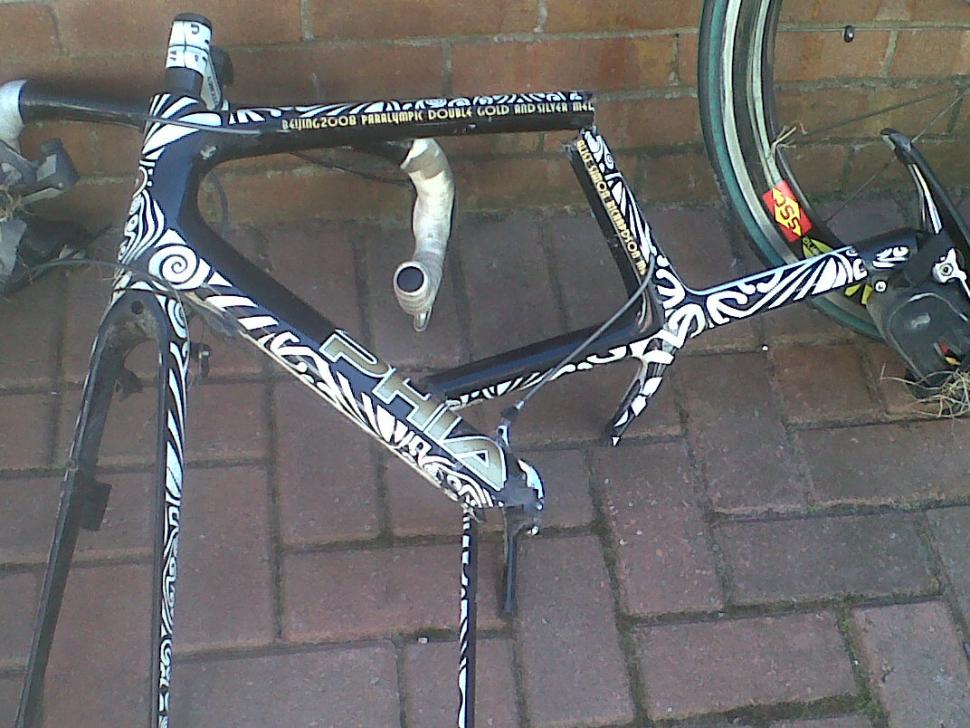
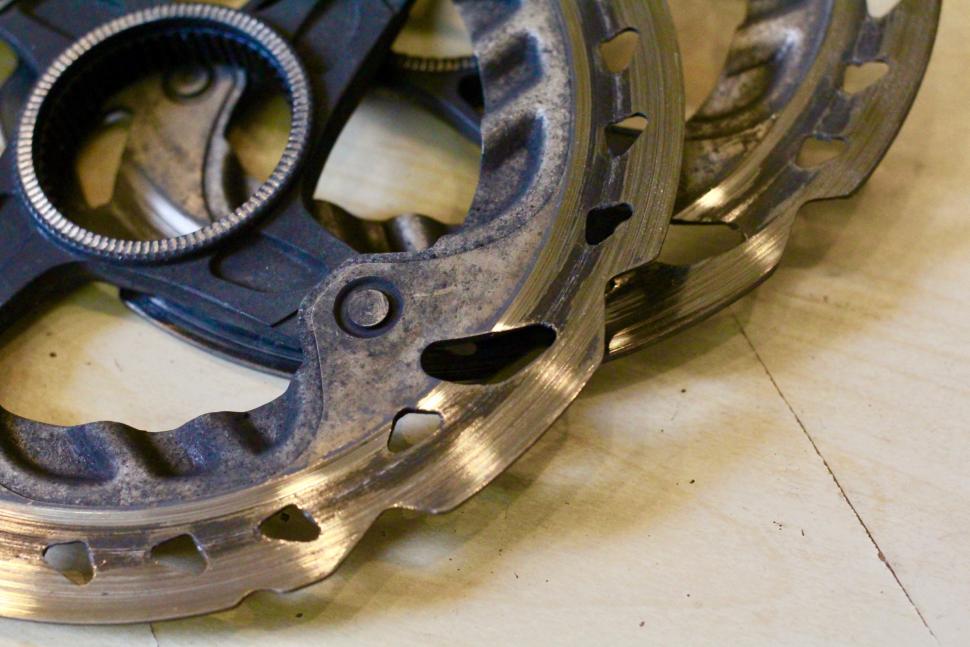
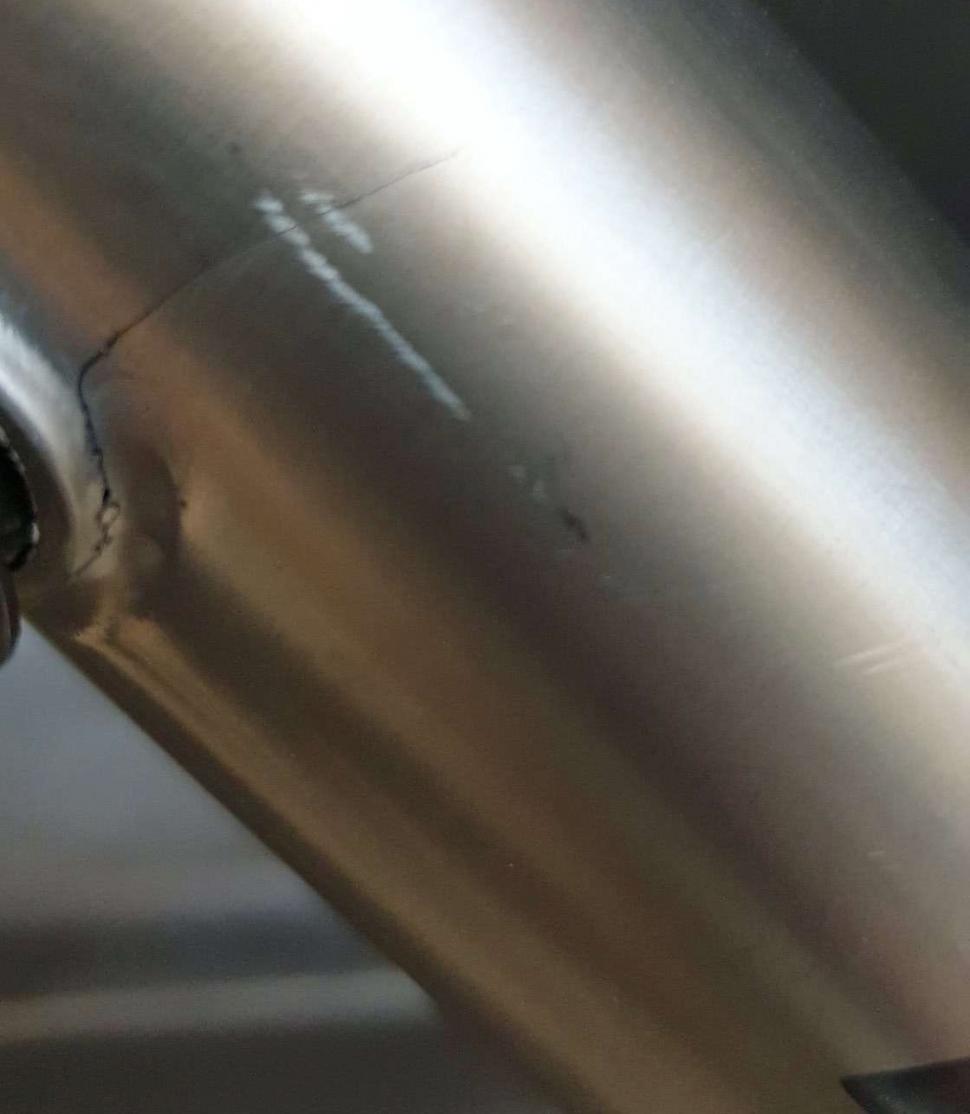
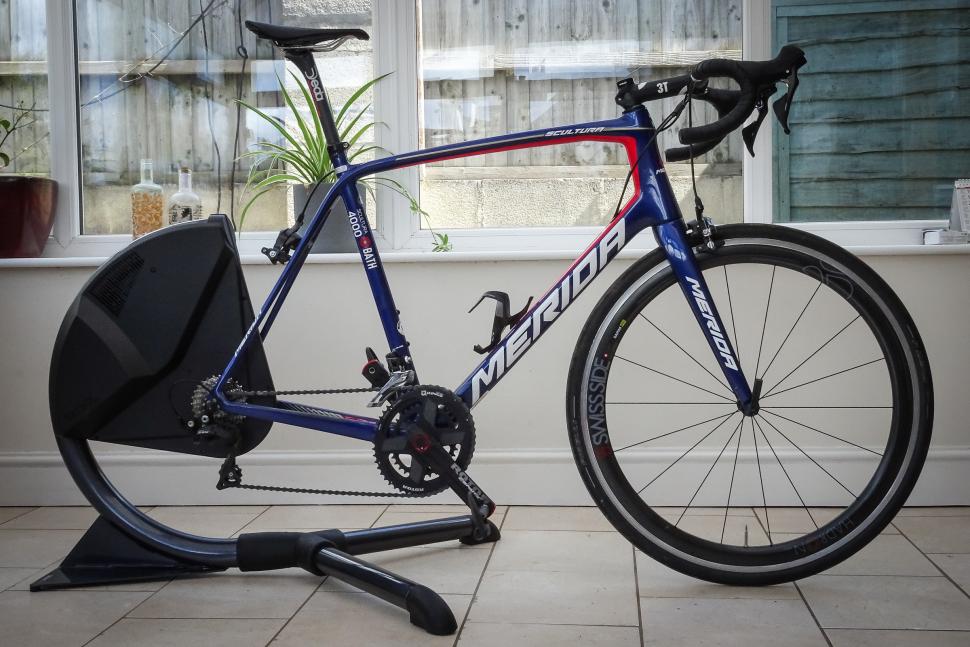
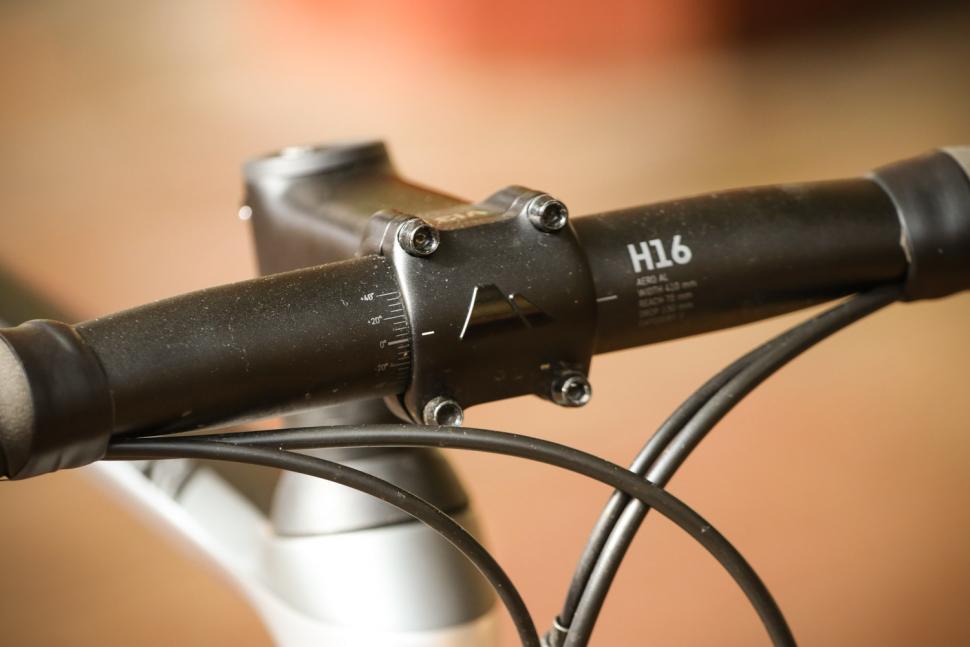
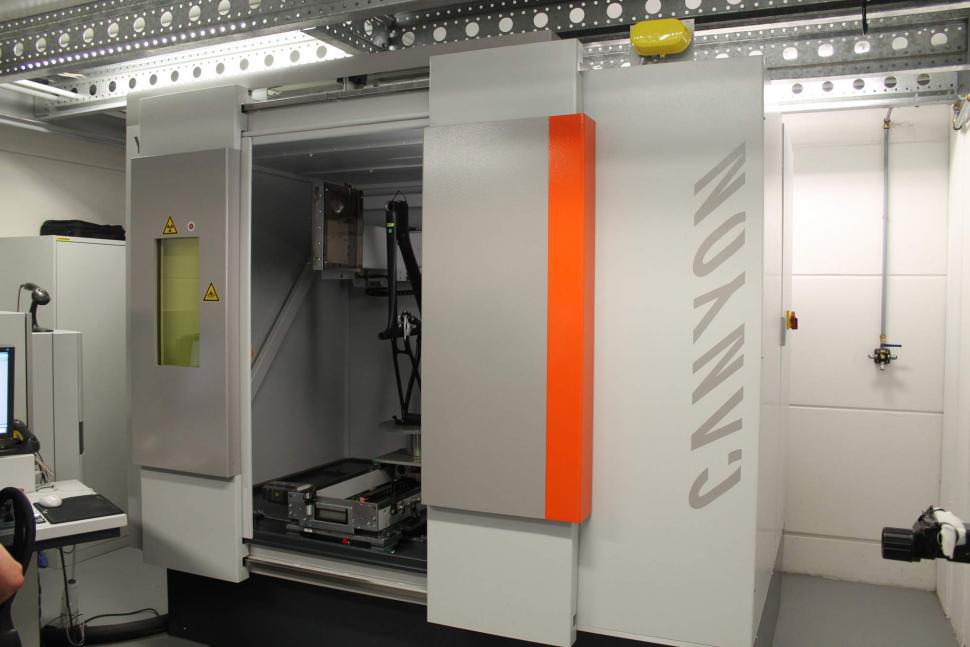
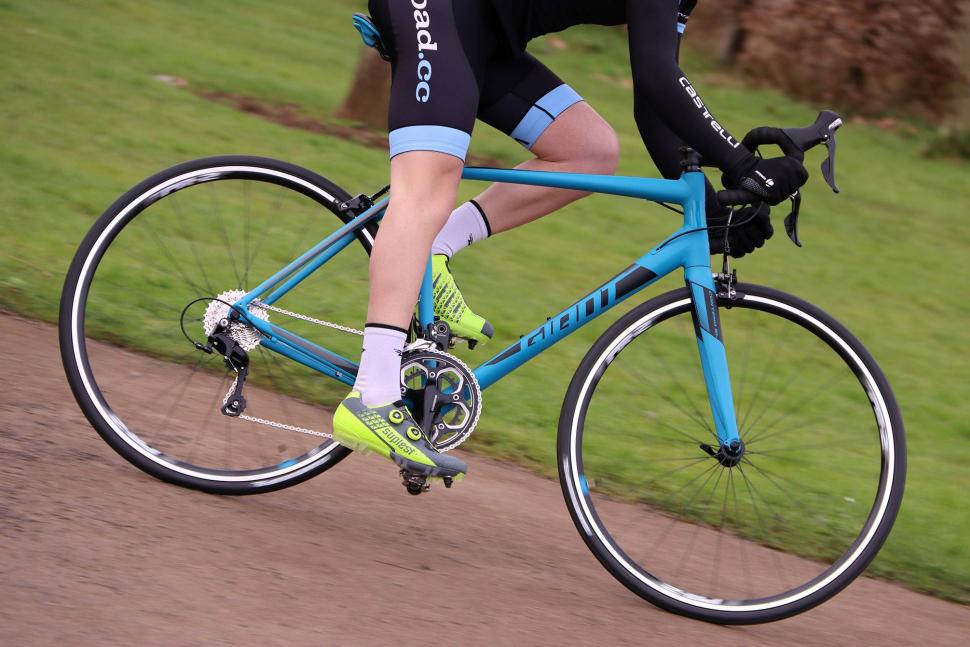
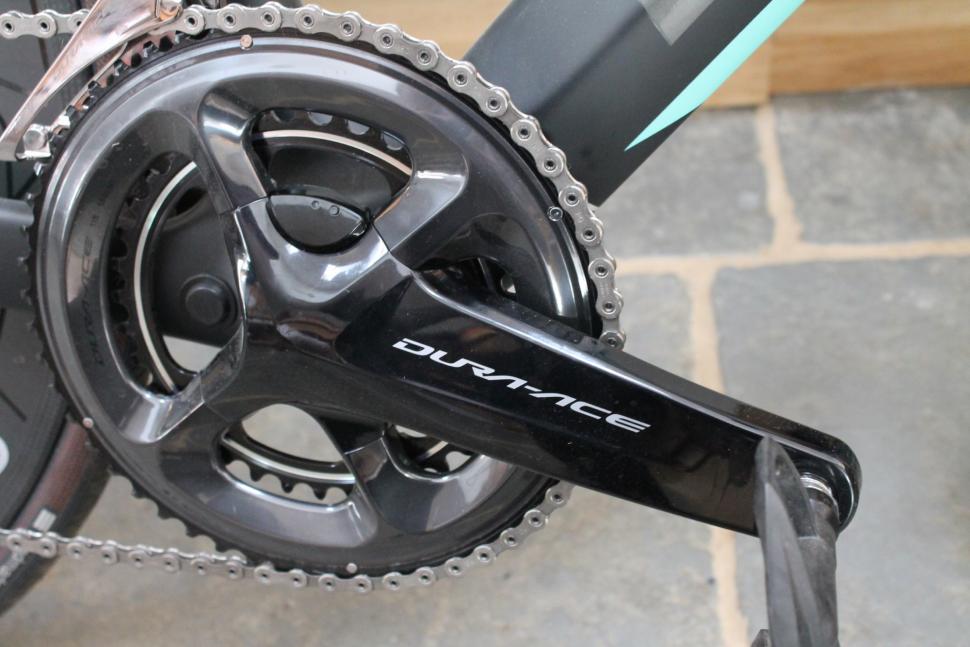

Add new comment
23 comments
The Cannondale Lifetime Warranty can be taken with a huge pinch of salt, based on the response I received from them via the retailer r.e. my 7 year old bike, which was as follows: "Unfortunately, I have some bad news as I expected. Cannondale have come back to me confirming this does not qualify for a warranty claim as it is not deemed a manufacturing defect. Like all materials, carbon has a limited lifetime which is five years and that's what Cannondale cover, so as it is a couple of years further down the line they will not warrant the damage." Curiously none of their marketing material suggests you should depreciate your bike over 5 years. Also, they don't stock the part I need to fix the bike. Imagine if a car supplier, for example, said it could not supply parts for a seven year old car.
I had some notions about aluminium frames which I have now abandoned after riding one. The other notion, which may or may not be correct, which has prevented me from 'risking' a plastic (carbon) frame is that it just breaks and someone states 'you must have crashed it or it wouldn't have broken'. I am rather impressed by the Cannondale and Specialized warranties, which suggest to me that modern aluminium frames are a good bet. I have 55 years of bike experience now, and 2 frames have broken: one was a glued Raleigh Special Products steel frame which surprised me by breaking a chainstay as a result of internal corrosion after 25 years of varied and careless use in all conditions by me- I was quite happy with that performance. Another was a bespoke Reynolds steel frame which cracked on the seat tube about 10 years after it was made, and the tube was replaced free by the shop. That touring bike is still going, but has largely been superseded by the steel trailer-towing Vitus gravel with the amazing disc-brakes!
*cough* Ultegra cranks *cough*
They'd be fine if they'd just make them L shaped. No idea why it's never been thoguht of.
Well, I was initially upset when my crank formed an impromptu L-shape, but as luck would have it, Road.cc had decided to run a brand new article on the many advantages of L-shaped cranks. I'd share a link to it, but I can't seem to find it and worry that its knowledge is forever lost to us.
Let me tell you the story of my experience with Giant.
I have a Giant TCR Advanced SL that I bought in November 2019.In August 2020, I noticed a crack in the left chainstay. I never had a fall or any kind of accident with the bike.
I contacted my dealer directly and they were very helpful, they sent my frameset to GIANT Deutschland promptly to analyze the problem.
Almost a month later, I received the reply where I was told that the chainstay fracture happened because of an external impact without ever justifying or presenting any plausible evidence and without even being interested in guaranteeing the customer a viable solution to the problem.
With that said, what I can tell you is that Giant customer service is very unsatisfactory and I don’t recommend it at all. Run away from this brand
Interesting article which I am sure is of interest to many cyclists
Can anyone clarify why most manufacturers warranties are only for original owner. I mean they are warrantying their product for 5 years, what does it matter if ownership has moved to someone else
unfortunately my lawyer wasn't with me but got an interesting off the cuff remark in a specialized dealer......had taken the rear wheel off mrs antigee's new ruby in to have the cassette removed (it was so tight I bent my chainwhip failing to slacken it!) the mechanic asked "why are taking it off".... answer "to put a 36 on" to which she responded with "that's outside the spec' so it will invalidate your warranty" I didn't quake in my shoes as not that bothered...but should articles like:
https://road.cc/content/feature/213519-struggling-hills-if-you-need-lowe...
"The very latest versions of Shimano's Ultegra and 105 GS rear derailleurs will actually handle an 11-40 cassette, which opens up a range of possibilities for gravel bikes, touring bikes and any other situation where you're not in a hurry."
carry a warranty warning ? or just another dealer happy to tell me they don't really bother to put any effort into warranty claims?
'
Frame warranty is not affected by changing components providing that all the components work together and are a reasonable fit for the use of the bike.
So putting triple clamp suspension forks onto an XC bike WILL invalidate the warranty. Bodging disc brakes onto a rim brake only frame will also kill any warranty. Even things like fitting a rack to a frame without rack mounts (which you can do using P-clips) will probably void the warranty becasue you're adding extra load to the frame which it wasn't designed to withstand.
But changing the gear ratios will be fine - providing that the larger cassette clears the spokes on the rear wheel and the correct rear mech is fitted to accommodate that larger cassette and it's all set up correctly. None of that is related to the frame so won't affect the warranty in any way.
To give a thorough clean? Or how about... What is the relavence?
I had completely forgotten about Specialized's lifetime warranty for their frames when I walked back in my local bike shop (the lovely Fudges in Chiswick) asking them about a repair and/or new bike to my old Sirrus hybrid. It had done a few thousand miles when the frame cracked randomly. Sheared off near the bottom bracket.
I'd bought the bike there and they checked the warranty terms, emailed a few pictures to Specialized warranty team as described above.
As my bike model was no longer made I was offered two choices.
1. A new frame free of charge, but I'd have to pay for fitting my accessories to it and pay for accessories which didn't fit the new frame
2. A completely new bike at cost(ish)/half price, up to the value of the bike I'd bought before
I chose the latter and felt very good about both my LBS and Specialized. Top service from them both.
Same happened to my old Specialised. Frame cracked on the top tube and Specialised replaced it with their latest equivalent.
I had an aluminium framed Giant Revolt that suffered a crack on one of the seatstays, near to the bridge. Few emails and pics sent back and forth with shop, and Giant agreed to refund the cost of the complete bike. Was very happy with the result. I have a TCR too, I'm very happy with their frame warranty based on my own experience.
Sorry @ragtag but something doesn't add up about that story. Partly it's the classic "anecdata" - Giant wouldn't warranty my frame therefore their warranty is shit" - and partly because if the head tube really was welded out of line (extremely unlikely given the automated manufacturing and quality control) it would show up immediately as atrocious handling. I can bet that the conversation the retailer had with Giant was very different to the one they had with you...
@Natrix: replacements will be whatever the company has in stock at the time that's equivalent or better. Doesn't have to be the same and in the case of a model that's discontinued, there's uually no other option but to give the next best thing. Counter to that, I remember a guy bringing in a very old beautiful carbon-tubed Specialized (one of their early ventures into carbon with lugs and carbon tubes) and one of the tubes had become un-bonded from the metal lug. Specialized gave him a brand new full-carbon Tarmac frame as the only current "equivalent" (it wasn't equivalent, it was WAY better!) They didn't have to do that at all, the guy's frame was about 10 years old but he was decent and very upset by it and actually came in just looking to buy a new bike but being a nice helpful sort of shop we phoned Specialized and asked them the question. Their warranty dept was always awesome.
As @JohnStevenson says, I've seen/heard most variations on a theme of "I was just riding along..." and some really quite extraordinarily broken frames over the years. Being honest and decent about it will get you far more than outrageous claims or hostility or the classic "I'm an engineer and..."
We had a funny one with Kona where the guy was adamant that he'd just been riding along... so for a laugh we sent Kona the frame (which was sort of folded in half from what was obviously a bad landing off a big jump) and Kona sent the guy one of those devastatingly sarcastic-rude but very funny letters basically telling him to get stuffed.
What is equivalent IN THEIR OPINION. In my opinion, a far heavier, cheaper, scratched steel frame wasn't equivalent to a titanium frame and they did have titanium framed bikes in their range at the time but they handled the whole thing very poorly. Initially I was told to take the bike to the local raleigh dealer, who then tried to charge me for stripping it down to the frame. I said that I could strip it down so they actually rebuilt it just so that I had to strip it down!!
There was then a delay of several months before the steel frame turned up. They steadfastly refused to upgrade it in any way, even though it was scratched. It needed a different seat tube and front mech as the originals wouldn't fit which was another load of hassle.
Very disapointed with the whole experience, especially as it was a mechanic at the raleigh dealers who broke the frame in the first place.............
That's not warranty then, it's a shop error and the shop need to rectify it to essentially give you exactly what you had before (or better) even if it costs them.
Although I'd be curious as to exactly what the shop mechanic was doing to break the frame...?!
I agree with crazy-legs - if the shop broke it, then it's not a warranty replacement and the shop has to make good the situation. If you're unhappy with it, you can just sue the shop for the cost of a replacement frame.
My carbon fibre Genesis frame got smashed accidentally by my LBS (something fell from a height onto the cross-bar), so they got an identical new frame shipped in (they're Genesis dealers) and built it up with the bits from my bike. As it was a new frame, the warranty for the frame was then reset.
I know the shop very well, they were dissappointed and are still chasing Giant. They said they have had a number of issues with Giant when it comes to aluminum frames. You can think what you like but you add nothing, just a bunch of "I bets".
I had the frame inspected by a specialist to look at the issue, he noticed the welds and that it wasn't straight. But hey, from your view at your mum's home you must know better.
I aways takein the warrenty the manufature offers when buying a new bike. When your spending over 2000$ plus on a new bike it does play a part in what brand you purchace.
Great writeup, Mat. One other thing we've seen from a few manufacturers of carbon frames is the response to a warranty claim for a crack in the frame: "Our frames don't just spontaniously crack. You must hve crashed it." The rather unhappy rider then contacts us to evaluate the frame and write a letter to the manufacturer. If we can access the inside of the frame with a borescope, we look for wrinkles in the carbon that often show up directly under the crack. If we can't access the inside, we can cut the frame open and quickly see a wrinkle or other manufacturing flaw that would cause such a premature cracking. Those photos often result in a new frame being shipped to the customer as well as a payment for our inspection service.
Shame Natrix, back in '97 they replaced my glued Ti mtb (Raleigh Special Products Division) with a welded Ti frame, the 850, which is still my good bike.
Raleighs frame warranty is pretty poor as well. They replaced my broken titanium frame with a far heavier steel one, there's nothing in their warranty that says the replacement has to be of the same quality................
Giant's warranty counts for nothing. My daughter has a frame that buckled after using it in a local park. It's a TCX and the top tube caved in on the underside in one place. The retailer said that it shouldn't happen. Giant said that it was due to improper use, without every seeing the bike first hand or asking anything about it. She's 50 odd kilos, and not into getting air on any bike, let alone a 'cross bike. She rode up and down banking, dismounting, mounting and general cx type things, on very tame ground. We go there often.
If you look at the current Giant Bicycles Instagram you will find a picture of someone on the same model bike bunny hopping a log. She didn't bunny hop anything and didn't crash it.
A specialist we consulted produced a report and identified the head tube was welded on incorrectly (the tube wasn't straight) and the weld had gone through the metal of the head tube. This may or may not have been a reason for the damage, regardless, this is not manufactured well enough for a bike which costs £2000.